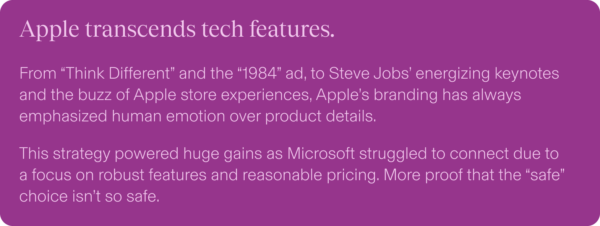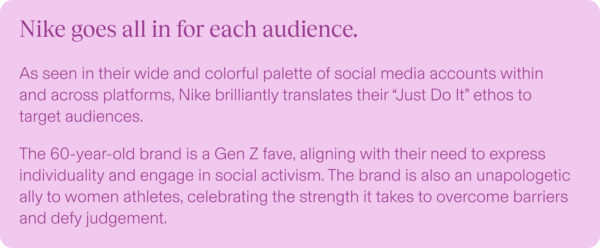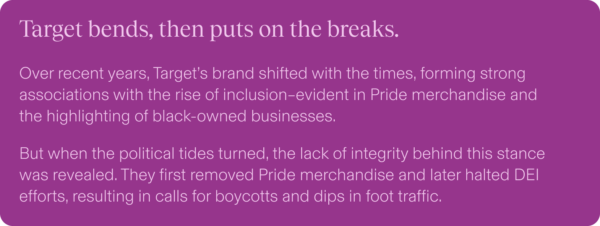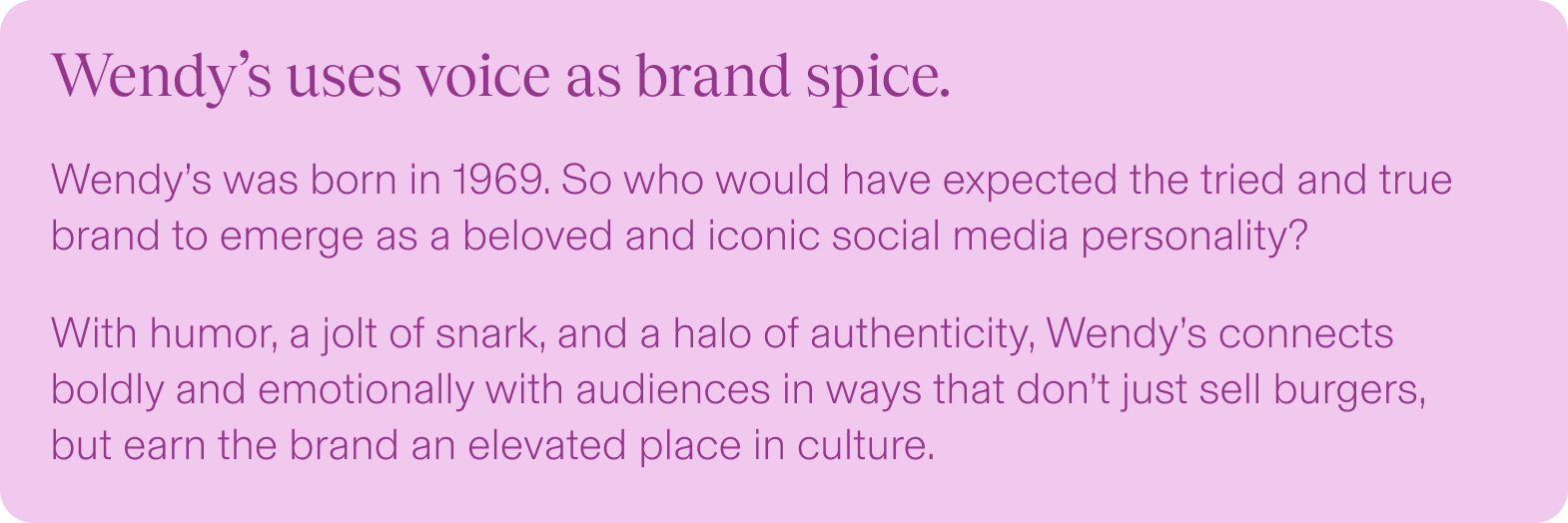Why is defining brand so difficult? Think of how quickly the bounds of brand design, voice, expression, and experience have expanded and continue to expand, thanks to the Big Bang of the internet and now the cosmic shift of AI.
If you were born somewhere south of the turn of the century, you may recall when brands were curated and controlled.
Mainly composed of a logo, tagline, ads, and packaging, brands were more like museum exhibits than living, breathing entities. That’s because so few touchpoints delineated the scope of people’s engagement.
Today? Not so much.
Here’s the thing. “Brand” is somehow just as easy to define, but harder to get your head and hands around: It’s everything—all the ever-multiplying experiences and impressions people have with and of your company, people, and products.
And all those moments of interplay between humans and brands release emotional energy that reverberates outward, in reviews, social media posts, tradeshow chatter, YouTube unboxing videos, reddit threads, and beyond.
That’s why it’s so critical to thoughtfully craft every brand experience and outcome you have the agency to shape.
Brand is how you respond to questions on Instagram. Whether your customer support is hands-on or MIA. How you treat your employees, and how they in turn show up for customers. The authenticity, or lack thereof, in your messaging and whether you lead or follow with design. It’s the choices you make and how they affect people.
Perhaps a strict definition isn’t appropriate for such a dynamic, expansive concept, anyway. So here are a few of Emotive Brand’s fundamental principles for giving your brand shape, meaning, and the power to move people–to action and loyalty.
Own and deliver on your brand’s emotional impact.
Putting emotion at the center of your brand gives you a barometer for decision-making and inspiration for meaningful, inimitable creative expression.
Ask people why they love a brand, and they often struggle to pin it down. They may list logical reasons like quality or aesthetics, but in the end it comes down to a feeling. How does the brand move them? Why do they come back for more of that feeling? What does that feeling mean to them? Brands that carry real emotional weight are the ones that earn love and respect.
This principle goes beyond relationships with customers. Take the value of an engaged workplace, creating specific meaning and value tailored to attract and engage employees and recruits with shared values and purpose, increasing innovation, productivity, creativity, and commitment.
No matter the audience, when it comes to defining your brand, emotional impact is key to unlocking business impact.

Think of your brand as a prism.
You can illuminate the same purpose, ideas, and values from different angles to connect with different audiences.
A single brand has many facets. The same purpose, values, and mission are reflected in different ways to connect with different audiences, whether potential customers or loyal devotees, longtime employees or new recruits, or–at the highest level of expression–the world at large.
For example, the statement of purpose or brand promise you’ve defined for customers should have a corresponding statement for employees—the same idea filtered through an internal lens. Imagine a hospitality company that tells guests to “expect remarkable experiences.” Translated internally as “creating remarkable moments,” employees are inspired to find ways to make every guest interaction worth talking about, thereby delivering on the customer promise.

Give your brand the freedom to flex.
Just like people, your brand needs the emotional agility to shift and meet the moment while maintaining integrity.
Even within the scope of one audience, how your brand shows up should vary depending on where, when, and with whom you interact. In your own life, think of the depth of communication with a new friend versus a lifelong bestie. A brand hasn’t earned the time and space in the lives of new customers and prospects to assume closeness or understanding.
As relationships deepen, your brand can be expressed in more meaningful, personal ways that align with needs revealed by the customer. Context matters, too. For an airline brand, a friendly greeting like “so good to see you again” conveys warmth when it comes from a familiar gate agent. Plastered on a sign, this message feels inauthentic and out of place.
At Emotive Brand, we create structure in the form of brand architecture, but the framework accommodates different phases of relationship-building, growth and change. Rooted in clear purpose aligned with a unique emotional impact, the brand can develop, expand and respond, connecting with people and shifting with the times.

Create your own definition of brand.
The concept of brand can be nebulous, but you can get a foothold by prioritizing what matters most to your business.
More often than not, the answer to “what is a brand?” entails a list of well-loved icons. Sure, references to Nike, Apple, or Google can give form to the concept, but solely thinking of brand in terms of big names isn’t enough. Especially when your vision challenges the status quo.
At Emotive Brand, we work with a type of leader that we call Visionary Reinventors. As category creators and market disrupters, they learn from other brands, but they’re not modeling themselves after them. Why look backwards when you’re trying to shape the future?
Think of what “brand” might mean to a B2B tech start-up—reliant on in-person pitches and tradeshow experiences to reach enterprise executives—versus a B2C innovator selling exclusively online to Gen Z. The former needs to emphasize the forging of connections in high-stakes, human-to-human interactions. For the latter, “brand” is centered on expressive, cutting-edge design and social media creativity to break through at scale.

“Brand” is yours to shape and imagine.
Today’s brand landscape is wide open. No more standard toolkit. No more checking the same old boxes. With the intended emotional impact of your brand as a guiding light, the path forward becomes not only clear–but exciting and inspired.
Own how you want to make people feel to accelerate connection and ignite business impact in ways no competitor can match.













